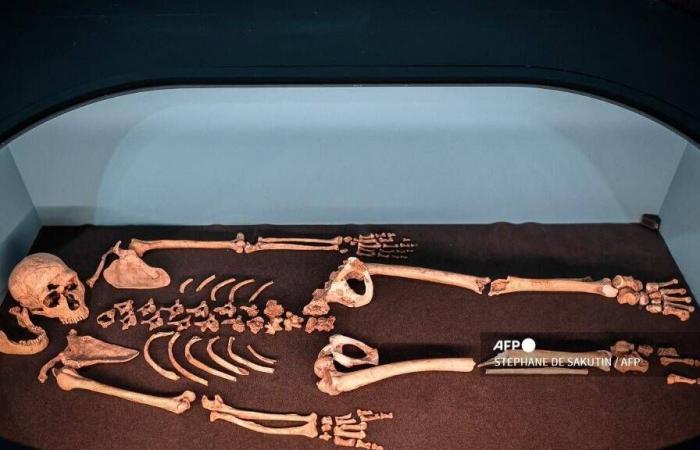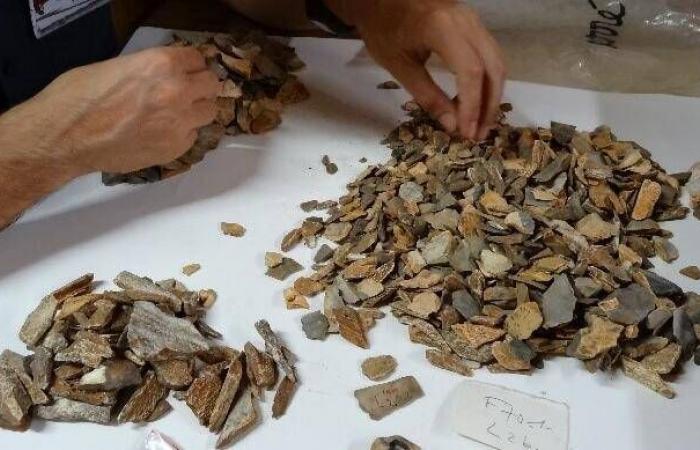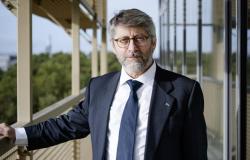Published in 2020 in the journal Scientific Reports, the conclusions of the study were taken up at the time by numerous media and led the researcher to tour French-speaking radio channels. It is often the known, public face of a discovery: release of a study, media announcement, interview with the authors. But how do scientists produce such knowledge? What approach do they follow? When do discussions about the results and their interpretations take place? How to deal with disagreements between peers? These are all these questions from behind the curtain that the author answers in his book. It depicts science in the making. Readers follow the investigator in his work, starting from his office at the Museum of Man with an unknown sample, taken out of the cupboards in 2013: a plastic tube containing a piece of tooth. From there, the investigation begins, which will take us back in time several decades and millennia.
“I wanted to tell this story in a more personal way with the opportunity to show the scientific approach and the limits that we can encounter. These are important aspects of research that are often left aside,” confides Antoine Balzeau. The Neanderthal expert recalls a controversy that broke out in 2023, linked to the study of Neanderthal bones.Homo starsa hominin older thanA wise man. A researcher proclaimed that a child’s skeleton had been buried, pushing back the age of the first burials of the human species much further back in time. “The scientists behind the research were fired up. They made a book, a documentary on Netflix. They talked about lots of things that they imagined but which they have not scientifically demonstrated at all, regrets Antoine Balzeau. It’s complicated for the general public to then sort things out. It is always a form of investigation during which one must not let one’s imagination go beyond reason. You have to keep a cool head and remain humble.”
Our closest cousins
Humility, the author appeals to it from the beginning of the work by reminding readers that we must place our species for what it is, in its evolutionary history. It belongs to a tree-like bush of hominin species which have lived on Earth for the last four million years and of which we are the last survivors. They are all characterized by bipedalism, sharing very early the manufacture of tools, and for some the use and know-how of fire such as The man stood up, neanderthalensis et sapiens. Without forgetting that these last two representatives of the genre Homo also have in common art, the use of medicinal plants and the treatment of the deceased.
The Neanderthals are our closest cousins, having lived in Western Eurasia between – 400,000 years ago and – 40,000 years ago. The only biological characteristic specific to A wise man is to have a chin, and some anatomical criteria are attributed to that neanderthalensisgenerally smaller, with a larger brain, a broad rib cage and a bony frontal pad. They are so close to modern humans that scientists are still debating today the classification of Neanderthals, that is to say the relationship they have with us.
The prehistoric site of La Ferrassie is one of those which has provided the world with the most Neanderthal bones, from individuals of various ages, and discovered between 1909 and 1922. The remains of the child discussed in the study of Antoine Balzeau were found in 1973 during an excavation of the site begun in 1970 and supervised by the French prehistorian Henri Delporte. The first discoverers who unearthed these bones did not doubt that they were burials, but a scientific demonstration was lacking. But some archaeologists were against this idea. “They saw it as a religious act, and according to them, it was not possible,” indicates Antoine Balzeau who exchanged and collaborated during the investigation with colleagues who were more than skeptical.
47 new fragments in the closet
At the National Archeology Museum in Saint-Germain-en-Laye, in the Paris region, Antoine Balzeau and his colleagues are going through the contents of the archive boxes from this famous 1973 excavation at La Ferrassie. The paleoanthropologist finds the reference of this “human tooth” associated with excavation square no. 1 of La Ferrassie. An important area since it is from there that the remains of the child, known under the reference LF8, were exhumed. A large part of the material removed from this square in 1970, and dated to the Mousterian period, the name of the Neanderthal era, is still collected in bags, untouched for forty years and ready to reveal their treasures.
Scientists discovered 47 new bone fragments there, which they characterized anatomically and even managed to connect to the known remains of LF8. And thanks to cutting-edge technology, X-ray tomography, they are revealing its internal mysteries. Like this canine forming in a large piece of mandible, confirming the child’s stage of development.
A year passed before the paleoanthropologist obtained authorization to return to excavations in square no. 1, to try to find the child’s legs, because only elements of the upper body had been found. On site, eminent Anglo-Saxon colleagues are already working and a collaboration is being established. The author describes the atmosphere of the excavations, the communication with his peers, which starts off rather well but later freezes when it comes time to publish his conclusions.
Upcoming research
From this field work, the scientist and his group will mainly draw contextual information, dating the layers around the child, thanks to a battery of modern methods – very well popularized by the author – of which their predecessors were deprived: theodolite for the 3D reconstruction of excavations, paleoproteomics and ancient DNA for the identification of pieces of bone, carbon-14 dating and optically stimulated luminescence.
The investigation into LF8 lasted seven years, with its share of discoveries and disappointments, but in the end a scientific demonstration based mainly on the orientation of the bones and the age of the ground containing the remains which is older (-60,000 years) than that of the child’s bones (-42,000). And the understanding of these Neanderthals from La Ferrassie continues for Antoine Balzeau. “We did dating for the bones associated with the first adult found at La Ferrassie LF1 and which gave an age very similar to that of the child,” notes the paleoanthropologist. I made a request to exploit other bone fragments, I am waiting for the response. If we manage to find additional information on the different individuals, we could try to build a certain network, to see if they were contemporaries or not, even perhaps relatives. We can answer these questions, it’s extremely interesting.”
Antoine Balzeau, Bone story. In the footsteps of the NeanderthalsEditions Tana, 2024.







